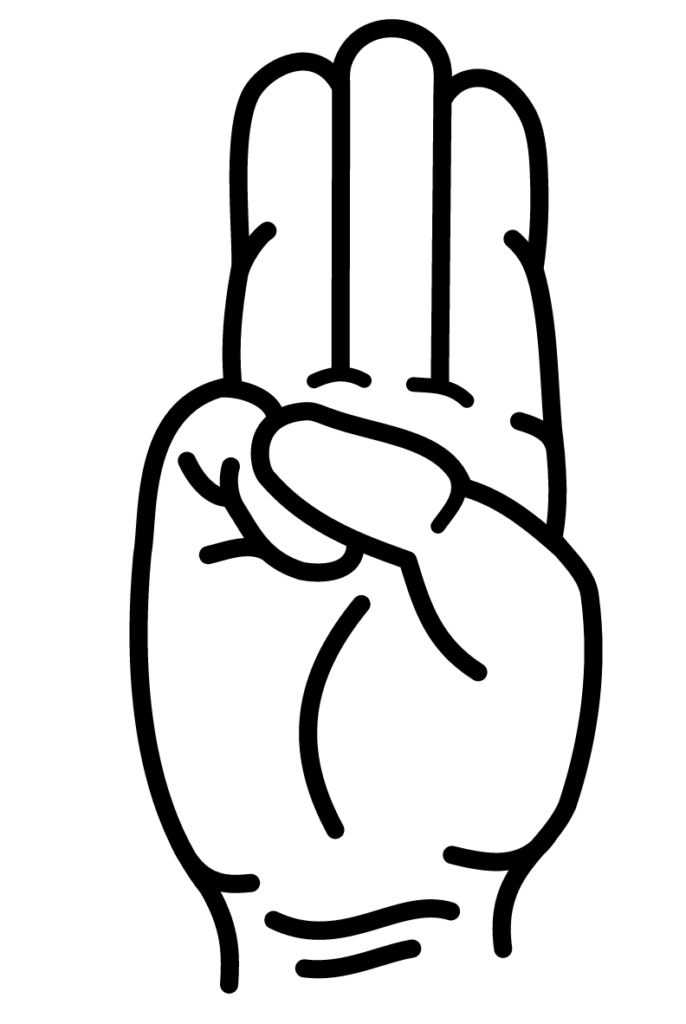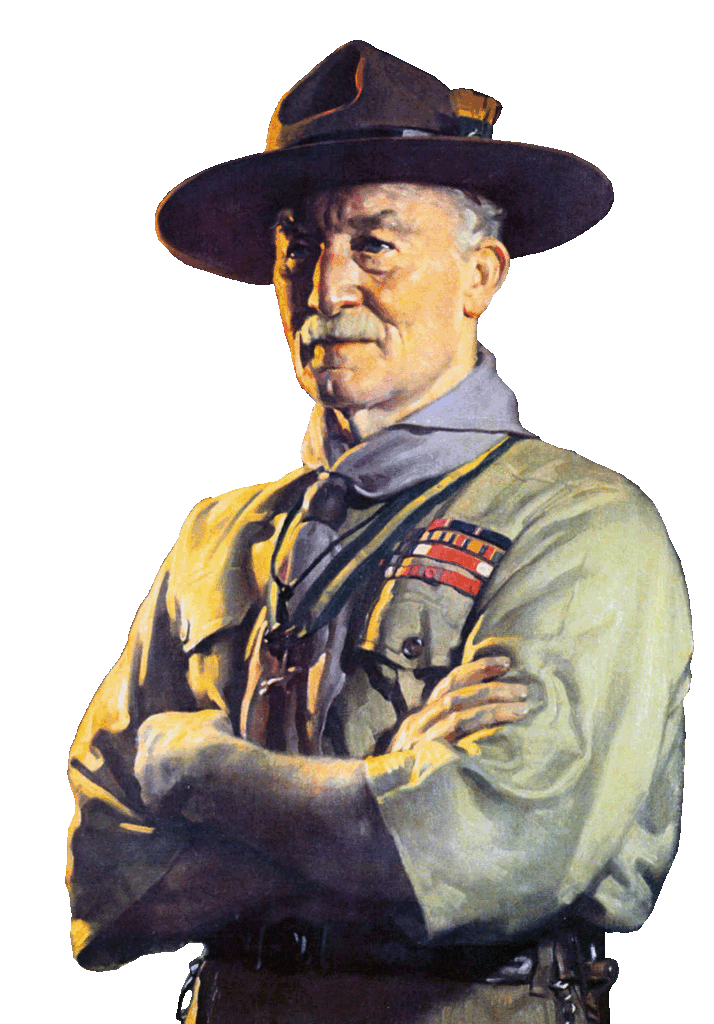To become a member of the Scout Association and our group your child will be asked to make a promise at an investiture ceremony. These promises are set out below but are different for each section, so please check the relevant section. There is also some information that will help you understand the values and traditions of Scouting.
Before being invested as a member of the Scout Association you will need to have a uniform.
Some badges, a woggle and the 78th Kingswood Scout Group Neckerchief will be presented during the Investiture.
Versions of the Beaver Scout Promise
The Beaver Scout Promise for members who are Atheist or of no faith background
I promise to do my best to be kind and helpful and to love our world.
The Beaver Scout Promise for members who are Buddhist
I promise to do my best to be kind and helpful and to act with love towards everyone.
The Beaver Scout Promise for members who are Christian
I promise to do my best and to be kind and helpful and to love God
The Beaver Scout Promise for members who are Hindu
I promise to do my best and to be kind and helpful and to love the world.
The Beaver Scout Promise for members who are Humanist
I promise to do my best and to be kind and helpful and to love our world.
The Beaver Scout Promise for members who are Jewish
I promise to do my best and to be kind and helpful and to love God
The Beaver Scout Promise for members who are Muslim
I promise to do my best and to be kind and helpful and to love Allah
The Beaver Scout Promise for members who are Sikh
I promise to do my best and to be kind and helpful and to love Waheguru.
Versions of the Cub Scout Promise
The Cub Scout Promise for members who are Atheist or of no faith background
I promise that I will do my best
to uphold our Scout values, to do my duty to the King,
to help other people
and to keep the Cub Scout Law.
The Cub Scout Promise for members who are Buddhist
I promise that I will do my best
to seek refuge in the Triple Gem, to do my duty to the King,
to act with compassion towards all life
and to keep the Cub Scout Law.
The Cub Scout Promise for members who are Christian
I promise that I will do my best
to do my duty to God and to the King,
to help other people
and to keep the Cub Scout Law.
The Cub Scout Promise for members who are Hindu
I promise that I will do my best
to follow my dharma and do my duty to the King,
to act with compassion towards all life
and to keep the Cub Scout Law.
The Cub Scout Promise for members who are Humanist
I promise that I will do my best
to uphold our Scout values, to do my duty to the King
to help other people
and to keep the Cub Scout Law.
The Cub Scout Promise for members who are Jewish
I promise that I will do my best
to do my duty to God and to the King,
to help other people
and to keep the Cub Scout Law.
The Cub Scout Promise for members who are Muslim
I promise that I will do my best
to do my duty to Allah and then to the King,
to help other people
and to keep the Cub Scout Law.
The Cub Scout Promise for members who are Sikh
I promise that I will do my best
to do my duty to Waheguru and to the King,
to help other people
and to keep the Cub Scout Law.
Versions of the Scout Promise
The Scout Promise for members who are Atheist or of no faith background
On my honour, I promise that I will do my best
to uphold our Scout values, to do my duty to the King,
to help other people
and to keep the Scout Law.
The Scout Promise for members who are Buddhist
On my honour,
I promise that I will do my best
to seek refuge in the Triple Gem, to do my duty to the King,
to act with compassion towards all life
and to keep the Scout Law.
The Scout Promise for members who are Christian
On my honour,
I promise that I will do my best
to do my duty to God and to the King,
to help other people
and to keep the Scout Law.
The Scout Promise for members who are Hindu
On my honour,
I promise that I will do my best
to follow my dharma and do my duty to the King,
to act with compassion towards all life
and to keep the Scout Law.
The Scout Promise for members who are Humanist
On my honour,
I promise that I will do my best
to uphold our Scout values, to do my duty to the King
to help other people
and to keep the Scout Law.
The Scout Promise for members who are Jewish
On my honour,
I promise that I will do my best
to do my duty to God and to the King,
to help other people
and to keep the Scout Law.
The Scout Promise for members who are Muslim
In the name of Allah, the most beneficent and the most merciful,
I promise that I will do my best
to do my duty to Allah and then to the King,
to help other people
and to keep the Scout Law.
The Scout Promise for members who are Sikh
On my honour,
I promise that I will do my best
to do my duty to Waheguru and to the King,
to help other people
and to keep the Scout Law.
Scout Motto
In the past each section had it’s own motto. When joined together the original ones said: ‘Do your best to be prepared for service’.
We now all use the same one to show unity and family. Once invested it should become your own personal motto. It is: ‘Be Prepared’ !

Scout Sign / Salute
The Scout sign is made by holding your right hand at shoulder height in the position shown below left. It is used whenever someone makes or renews their Scout Promise.
The three outstretched fingers represent the three main parts of the promise and the circle between thumb and little finger represents the world-wide family of Scouting.
The Scout salute is made by holding your right hand in the same position, but with your first finger pointing to your right eyebrow (and with the elbow out).
It is only used when in full uniform as a formal greeting or sign of respect e.g. when hoisting/breaking open the Union flag.

The Founder
The Scout Movement was founded by Robert Stephenson Smythe Baden-Powell (B.-P.) in 1907.
B.-P. was a famous soldier who once used local boys to help him defend a town during the Boer War. He wrote a book about some of the things they did for him and soon hundreds of youths were doing these things too.
Kind Edward VII told B.-P. that he should retire from the army and further develop the new ‘Scout Movement’. He was made a baron for his many services to the country and decided to share the honour with Scouting by becoming ‘Lord of Gilwell’.
Gilwell park is the Head Quarters campsite, known as the ‘home of Scouting’ where leaders are still trained to earn their ‘wood badge’ (which was also devised by B.-P.).
Scout Handshake
Scouts informally greet each other by shaking with the hand nearest to the heart and is offered as a token of friendship. B.-P. adopted this from his time in Africa, when he had seen native warriors lower their left handed shields as a sign of trust and friendship.
Scout Uniform
Scouts wear a uniform as it gives all of us a sense of belonging, it gives the Scout Movement a high profile and helps to reinforce a strong unified image of Scouting. The uniform is easily recognised by the public and shows that we are an active, dynamic youth movement.
B.-P. designed the first Scout Uniforms to take advantage of readily available materials and be practical when undergoing the various activities Scouts enjoy.
The uniform has evolved through many changes since then and today, we have several options of garments, depending on the nature of our activity.
Scout Neckerchief
The Scout neckerchief or scarf (with woggle) is one of the most instantly recognisable parts of the Scout uniform, as it has remained virtually unchanged throughout the whole history of Scouting. Each Scout Group in a district should have their own distinctly coloured scarf, as a ‘flag’ of their identity.
It too was introduced by B.-P., as a very useful piece of equipment. The triangular shape lend it’s self readily to first aid and B.-P. described many other uses for it in his books.
B.-P. first used the neckerchief with his soldiers, as it kept them warm in winter, and shielded from the sun in hot weather. He also made them tie a knot in the bottom as a reminder to do a good turn daily. When they had done so, they could untie it. Some Scout Groups still uphold the tradition of a knot to this day.
World Scout Emblem

Where ever you are in the world, if you see another person wearing this badge, it means they are an invested member of the World Organisation of the Scout Movement. There are now over 50 million Scouts in the worldwide family of Scouting!
It was designed by B.-P. as a symbol of our fellowship throughout the world and each part has a particular meaning:
At it’s heart is a white fleur-de-lis (a Lilly) pointing north, both the colour and flower have traditional meanings of peace and purity. It’s three petals represent the three main parts of our promise. The two stars are the open eyes of
truth and knowledge and each of their points represent an individual point of the Scout Law. It is all set on a royal purple background, which indicates our foundations of leadership and guidance.
Finally, our world unity and fellowship is shown as a large circle of rope joined with a reef knot— which can expand without breaking.
When you become invested, you too will be given this badge, so wear it on your uniform with pride and honour, as a symbol of your commitment to Scouting values.